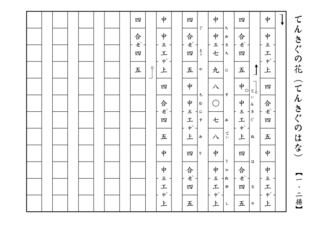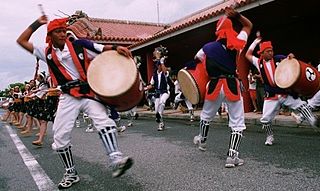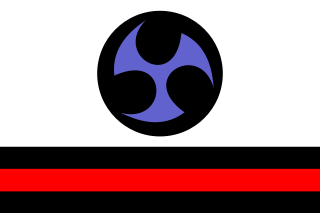Enka (演歌) is a popular Japanese music genre considered to resemble traditional Japanese music stylistically. Modern enka, however, is a relatively recent musical form, while adopting a more traditional musical style in its vocalism than ryūkōka music, popular during the prewar years.

Gusuku often refers to castles or fortresses in the Ryukyu Islands that feature stone walls. However, the origin and essence of gusuku remain controversial. In the archaeology of Okinawa Prefecture, the Gusuku period refers to an archaeological epoch of the Okinawa Islands that follows the shell-mound period and precedes the Sanzan period, when most gusuku are thought to have been built. Many gusuku and related cultural remains on Okinawa Island have been listed by UNESCO as World Heritage Sites under the title Gusuku Sites and Related Properties of the Kingdom of Ryukyu.

Tinsagu nu Hana (天咲ぬ花), also called Chinsagu nu Hana, is an Okinawan song about traditional Ryukyuan values such as filial piety and other Confucian teachings in the Okinawan language.
Okinawan music, also known as Ryukyuan music, is the music of the Okinawa Islands of southwestern Japan. In modern times, it may also refer to the musical traditions of Okinawa Prefecture, which also covers the Miyako and Yaeyama Islands, and sometimes the Amami Islands.

The Ryukyuan languages are the indigenous languages of the Ryukyu Islands, the southernmost part of the Japanese archipelago. Along with the Japanese language, they make up the Japonic language family. The languages are not mutually intelligible with each other. It is not known how many speakers of these languages remain, but language shift towards the use of Standard Japanese and dialects like Okinawan Japanese has resulted in these languages becoming endangered; UNESCO labels four of the languages "definitely endangered", and two others "severely endangered".

Yonaguni, one of the Yaeyama Islands, is the westernmost inhabited island of Japan, lying 108 kilometers (67 mi) from the east coast of Taiwan, between the East China Sea and the Pacific Ocean proper. The island is administered as the town of Yonaguni, Yaeyama Gun, Okinawa and there are three settlements: Sonai, Kubura and Higawa.
Ryūkōka is a Japanese musical genre. The term originally denoted any kind of "popular music" in Japanese. Therefore, imayō, which was promoted by Emperor Go-Shirakawa in the Heian period, was a kind of ryūkōka. Today, however, ryūkōka refers specifically to Japanese popular music from the late 1920s through the early 1960s. Some of the roots of ryūkōka were developed from Western classical music. Ryūkōka ultimately split into two genres: enka and poppusu. Unlike enka, archetypal ryūkōka songs did not use the kobushi method of singing. Ryūkōka used legato. Bin Uehara and Yoshio Tabata are considered to be among the founders of the modern style of kobushi singing.

Eisa is a form of folk dance originating from the Okinawa Islands, Japan. In origin, it is a Bon dance that is performed by young people of each community during the Bon festival to honor the spirits of their ancestors. It underwent drastic changes in the 20th century and is today seen as a vital part of Okinawan culture.
Kishidan (氣志團), which means "The Knights", are a Japanese rock band. They have a retro image, wearing Japanese school uniforms in the style of bōsōzoku. The lead singer, Show Ayanocozey, was DJ OZMA, until the persona was "retired" in December 2008. Kishidan announced a "comeback", after a three-year break, on January 27, 2009. The band had never officially split up, but had been taking a break while Show and Hikaru were working on the DJ OZMA side project. Their song, Omae Dattanda released on November 10, 2009, was used for the 11th ending theme song for Naruto Shippuden. They are signed to Avex Trax and are managed by Sony Music Artists. Their song, Warera Omou, Yue ni Warera Ari, is used for the opening theme song for Kamen Rider Ghost, released on December 9, 2015

The Ryukyu Islands, also known as the Nansei Islands or the Ryukyu Arc, are a chain of Japanese islands that stretch southwest from Kyushu to Taiwan: the Ōsumi, Tokara, Amami, Okinawa, and Sakishima Islands, with Yonaguni the westernmost. The larger are mostly high islands and the smaller mostly coral. The largest is Okinawa Island.
The Tanabe Hisao Prize was created in 1983 by the Tōyō Ongaku Gakkai, the oldest musicological society of Japan. The prize is named after the musicologist Tanabe Hisao, one of the founding members of the society. The prize is awarded annually to one or several individuals or groups who have published an outstanding work of Asian musicology during the previous year, one that "promotes further research in Asian musicology and contributes to Japanese scholarship." It is generally considered the most prestigious award in the field of Asian musicology awarded in Japan.
Shima-uta is a genre of songs originating from the Amami Islands, Kagoshima Prefecture of southwestern Japan. It became known nationwide in the 2000s with the success of young pop singers from Amami Ōshima such as Hajime Chitose and Atari Kōsuke.
Kaidā glyphs are a set of pictograms once used in the Yaeyama Islands of southwestern Japan. The word kaidā was taken from Yonaguni, and most studies on the pictographs focused on Yonaguni Island. However, there is evidence for their use in Yaeyama's other islands, most notably on Taketomi Island. They were used primarily for tax notices, thus were closely associated with the poll tax imposed on Yaeyama by Ryūkyū on Okinawa Island, which was in turn dominated by Satsuma Domain on Southern Kyushu.
Jissaku Nakamura was born in Joetsu, Niigata Prefecture and devoted himself to the abolition of the notorious Nintozei taxation or poll tax enforced in Miyako and Yaeyama Islands.

Ryūka is a genre of songs and poetry originating from the Okinawa Islands, Okinawa Prefecture of southwestern Japan. Most ryūka are featured by the 8-8-8-6 syllable structure.
Yoshiya Chiruu (吉屋ちるー) was a Ryuka poet (1650?–1668?) who was born to a poor peasant in the village of Yomitan in the Ryukyu Kingdom. She worked in Yoshiya, an Akasen or red-light district house, in the 17th century. She charmed many pechin by her literary ability and beautiful looks. A legend tells that she fell in love with the Aji of Nakazatu, but she committed suicide via starvation on hearing her freedom was bought by a rich man called Kurogumo, at age 18.
Angama (アンガマ) or angama odori is a style of dancing that is performed in many communities of Japan's Yaeyama Islands during the Bon Festival, which is known as sōrin in Yaeyama. A related performance is known as mushāma in Hateruma. In Kohama Island, the northern community performs a dance named jiruku while the southern community performs Minma buduri.
Kamui ware (カムィ焼), from Tokunoshima kamïyaki, is grey stoneware produced in Tokunoshima, the Amami Islands, Kagoshima Prefecture, Japan from the 11th century to the early 14th century, or from the late Heian period to the Kamakura period.
Ryukyuan music, sometimes called Nanto music, is an umbrella term that encompasses diverse musical traditions of the Ryukyu Islands The term "Southern Islands" is preferred by Japanese scholars in this field. Unlike in the West, the Japanese notion of "Ryukyu" is associated with the former Ryukyu Kingdom based on Okinawa Island and its high culture practiced by the Yukatchu class in its capital of Shuri. By contrast, most scholars cover a much broader region and lay emphasis on folk culture.










